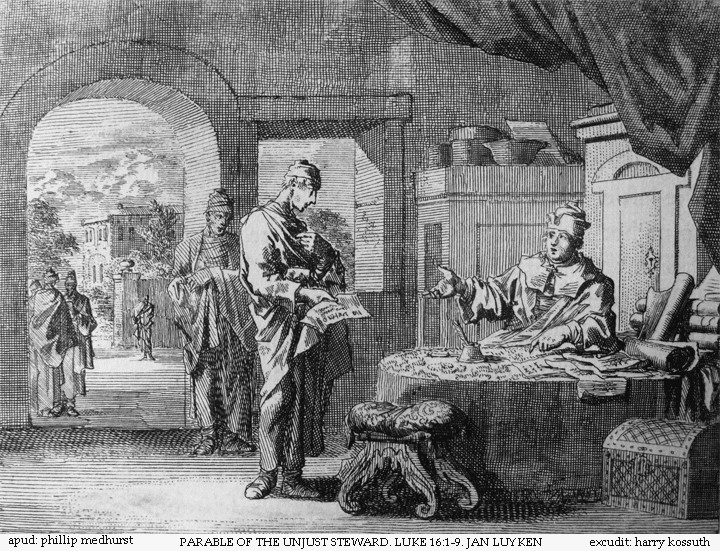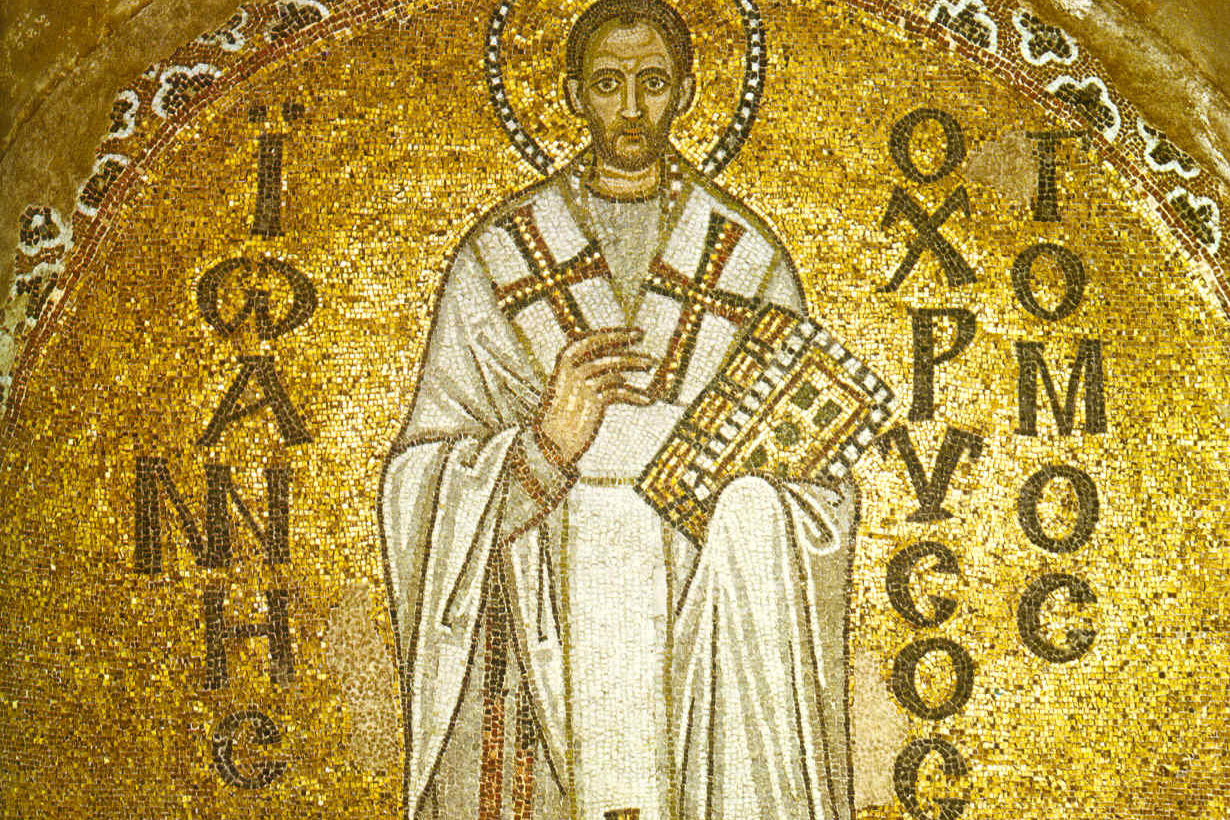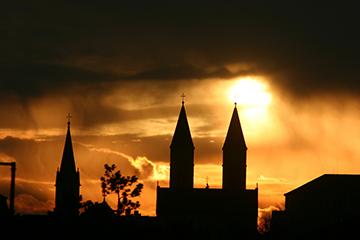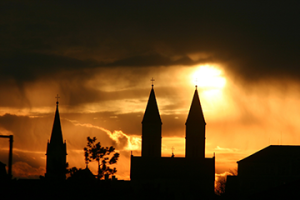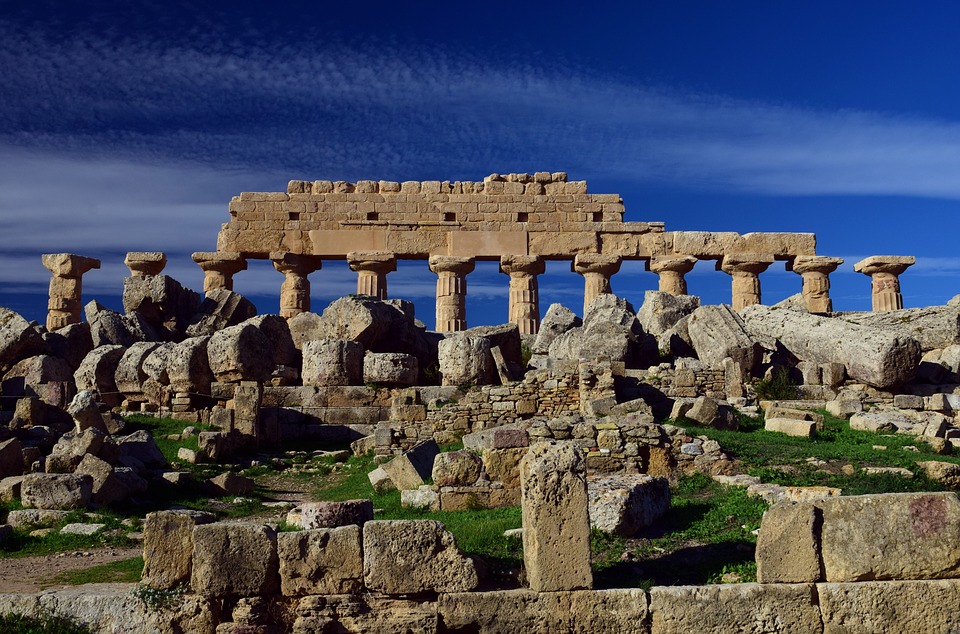In this Sunday’s Gospel, the Lord Jesus gives a penetrating analysis of the state of the sinner and some very sobering advice to us would-be saints. Let’s look at the Gospel in two stages:
I. ANALYSIS OF THE SINNER – In the opening lines of the Gospel, Jesus describes a sinful steward.
DELUSION (of the sinner) – Jesus said to his disciples, “A rich man had a steward …”
Notice that the man is referred to as a steward rather than an owner. God is the owner of everything; we are but stewards. A steward must deal with the goods of another according to that person’s will. We may have ownership in relation to other human beings, but before God we own nothing, absolutely nothing.
Part of the essence of sin is behaving as though we are the owner. We develop the arrogant attitude that what we have is ours to do with as we please: “It’s mine; I can do what I want with it.” “It’s my body, and I can do with it as I please.” But in fact, everything belongs to God.
Scripture affirms, The earth is the LORD’S and the fullness thereof; the world, and they that dwell therein (Ps. 24:1). Even of our bodies, which we like to think of as our own, Scripture says, You are not your own; you were bought with a price. So glorify God in your body (1 Cor 6:19). There’s a song that says, “God and God alone created all these things we call our own. From the mighty to the small, the glory in them all is God’s and God’s alone.” The Lord compares the sinner to a steward who acts as if he were the owner.
DISSIPATION (of the sinner) – “… who was reported to him for squandering his property.”
The Lord here describes the essence of many of our sins: we squander His gifts. We waste the gifts we have received and use them for sinful ends.
For example, in greed we hoard the gifts He gave us. Instead of using them to help others, as God intended, we store them up for ourselves. Yet all the goods of the world belong to all the people of the world, and they ought to be shared to the extent that we are able.
Other examples of squandering the things of God are these: in gossip, lying, and cursing, wherein we misuse the gift of speech; in laziness, wherein we misuse the gift of time; in all sin, wherein we abuse the gift of our freedom. This is the dissipation, the squandering, of God’s goods.
God has given us many good things, but instead of using them to build the Kingdom, we squander them and dissipate it.
DEATH (of the sinner) – “He summoned him and said, ‘What is this I hear about you? Prepare a full account of your stewardship, because you can no longer be my steward.’”
Here the Lord reminds us that someday our stewardship will end, and we will be called to account. Scripture reminds us, So whether we are at home or away, we make it our aim to please him. For we must all appear before the judgment seat of Christ, so that each one may receive good or evil, according to what he has done in the body (2 Cor 5:9).
We have an appointed time to exercise our stewardship, but at some point, our stewardship will end, and the books will be opened. Scripture says, And books were opened. Another book was opened, which is the book of life. The dead were judged according to what they had done as recorded in the books (Rev 20:11).
Although many pay little heed to the fact of judgment, Scripture warns, Say not, “I have sinned, yet what has befallen me?” For the Lord bides his time. Of forgiveness be not over-confident, adding sin upon sin. Say not, “Great is his mercy, my many sins he will forgive.” For mercy and anger are alike with him; upon the wicked alights his wrath. Delay not your conversion to the Lord, put it not off from day to day. For suddenly his wrath flames forth; at the time of vengeance you will be destroyed (Sirach 5:4).
Every steward (each of us) will die. Our stewardship will end and we will be called to render an account. Therefore, we ought to listen to the Lord’s advice.
II. ADVICE TO THE SAINTS – After analyzing the sinner, the Lord has some advice for those of us sinners who want to be saints. He lays out four principles we ought to follow:
1. Principle of INTENSITY – The text says, the steward said to himself, ‘What shall I do, now that my master is taking the position of steward away from me? I am not strong enough to dig and I am ashamed to beg. I know what I shall do so that, when I am removed from the stewardship, they may welcome me into their homes.’ He called in his master’s debtors one by one. To the first he said, ‘How much do you owe my master?’ He replied, ‘One hundred measures of olive oil.’ He said to him, ‘Here is your promissory note. Sit down and quickly write one for fifty.’ Then to another the steward said, ‘And you, how much do you owe?’ He replied, ‘One hundred kors of wheat.’ The steward said to him, ‘Here is your promissory note; write one for eighty.’ And the master commended that dishonest steward for acting shrewdly. For the children of this world are more shrewd in dealing with their own generation than are the children of light.
The Lord is telling us here that many of the worldly are craftier in what matters to them than are the spiritually minded in what (supposedly) matters to them.
Many people are dedicated and intense in worldly matters. They spend years in college, preparing for their career. They work hard to climb the company ladder. They develop (worldly) skills and become knowledgeable in their profession. In earning money and holding down a job, many display great discipline: getting up early to go to work, working late, going the extra mile to please the boss.
When it comes to faith, however, many of these same people display only a rudimentary knowledge of things spiritual and show little interest in praying or advancing in the faith. They will expend effort to please the boss, to please other people, but not to please God. Parents will fight for scholarships for their children to get into the “best” schools but not quite so dedicated to ensuring they learn the saving truth; the pews are empty, and Sunday School is poorly attended.
The Lord says to us here that the spiritually minded ought to show the same intensity, organization, dedication, and craftiness that the worldly show in their pursuits. We ought to be zealous for the truth, for prayer, and for opportunities to sharpen our spiritual skills and increase our holiness. We ought to be as zealous to be rich in grace as we are to be rich in money.
2. Principle of INVESTMENT – I tell you, make friends for yourselves with dishonest wealth, so that when it fails, you will be welcomed into eternal dwellings.
(Read here for more information on what the Lord means by “dishonest wealth”: What Does the Lord Mean by “Unrighteous Mammon”?.)
The Lord tells of how the dishonest steward made use of the money at his disposal to make friends who would help him in the next stage of his life. How about us? Are we willing to use our money and resources to bless others (especially the poor, who can bless us in the next stage of our life)?
On the day of your judgment, will the poor and needy be able to speak up on your behalf? Will they be among the angels and saints who welcome you to eternal dwellings? I don’t know about you, but I’m going to want the poor to pray and to speak to God on my behalf! Scripture says that the Lord hears the cry of the poor and needy. In this world, the poor need us but in the next world we’re going to need them. In this world, those with money and power are heard; in the Kingdom, it’s the poor and suffering who are heard. It’s a wise investment to bless the poor and needy.
In effect, the Lord Jesus tells us to be wise in our use of worldly wealth. The world tells us to take our money and invest it so that it will reap future rewards; so too does the Lord. How? By storing our wealth up in Heaven. And how do we do that? By giving it away! Then it will really be ours.
You can’t take it with you, but you can send it on ahead. Scripture elaborates on this idea: Command those who are rich in this present world not to be arrogant nor to put their hope in wealth, which is so uncertain, but to put their hope in God, who richly provides us with everything for our enjoyment. Command them to do good, to be rich in good deeds, and to be generous and willing to share. In this way they will lay up treasure for themselves as a firm foundation for the coming age, so that they may take hold of the life that is truly life (1 Tim 6:17). Notice that the passage says that through their generosity in this world, the rich store up treasure for themselves in Heaven.
This is the scriptural principle and the great paradox in the Kingdom of God: we keep something for eternity only by giving it away. We save our life by losing it. By giving away our treasure, we keep it and store it in Heaven.
So, invest, my friends. Invest wisely! Store up for yourselves treasures in heaven, where moth and rust do not destroy, and where thieves do not break in and steal (Matt 6:20).
3. Principle of INCREASE – The person who is trustworthy in very small matters is also trustworthy in great ones; and the person who is dishonest in very small matters is also dishonest in great ones. If, therefore, you are not trustworthy with dishonest wealth, who will trust you with true wealth? If you are not trustworthy with what belongs to another, who will give you what is yours?
What is the “small matter” of which the Lord speaks and in which we can prove trustworthy? The small matter is money. Most people make money the most important thing in life, but spiritual matters are far more important.
Scripture attests to this clearly. The Book of 1st Peter says that our faith is more precious than fire-tried gold. The Book of Psalms (19:10) says, The words of the Lord are more precious than gold, than much pure gold; they are sweeter than honey, than honey from the comb.
So, God says, let’s see how you are in the small but significant matter of money; then I’ll decide if you’re able to able to handle bigger blessings. Do you think you can handle Heaven and the spiritual blessings of holiness? If you’re trustworthy with worldly wealth, God will give you true wealth. If you’re trustworthy in what belongs to God, He’ll give one day what is yours.
Do you want more? Then use well what you’ve already received. Only then will God know that He can trust you with more. There’s a gospel song that says, “You must be faithful over a few things to be ruler over many things. Be faithful unto death, and God will give you a crown of life.”
4. Principle of INDIVISIBILITY – No servant can serve two masters. He will either hate one and love the other, or be devoted to one and despise the other. You cannot serve both God and mammon.
Pay attention! To serve means to obey. Most people obey money and affluence; they worship a high standard of living before they obey God. They meet their world obligations first and then give God what is left over.
We are called to obey God alone, to have an undivided heart. The wording here is strong. You cannot obey the world (money) and think that you’re also going to obey God. You must choose which will be more important.
Now don’t tell me we don’t need a lot of grace and mercy! Money and the lure of the world are very powerful. It’s time to get on our knees and pray for the miracle of preferring God to the world.

